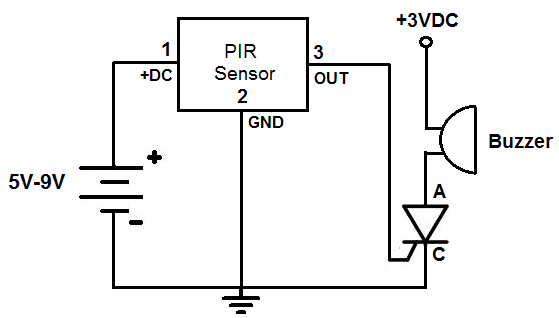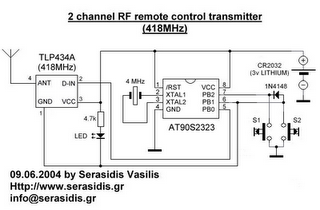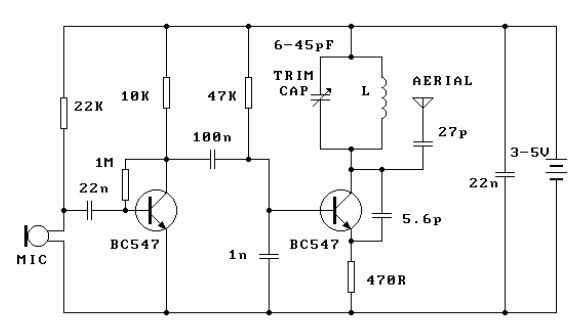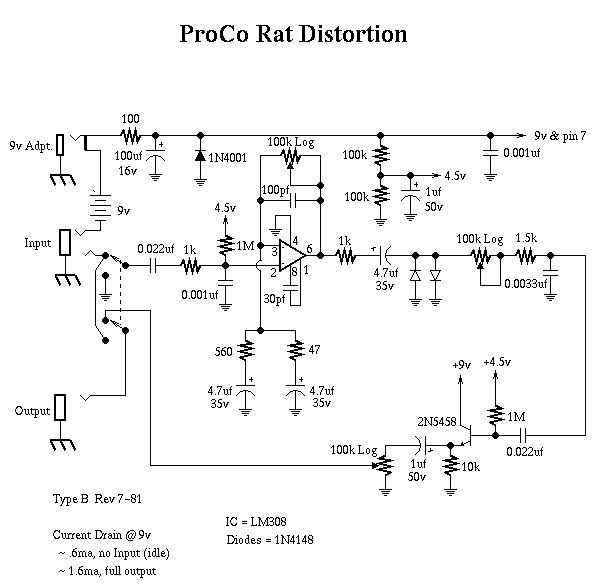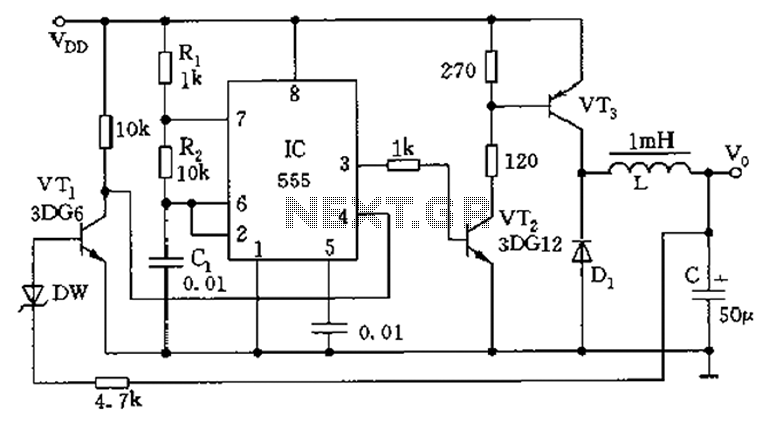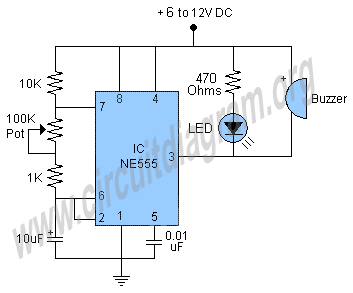
Guitar Vibrato circuit
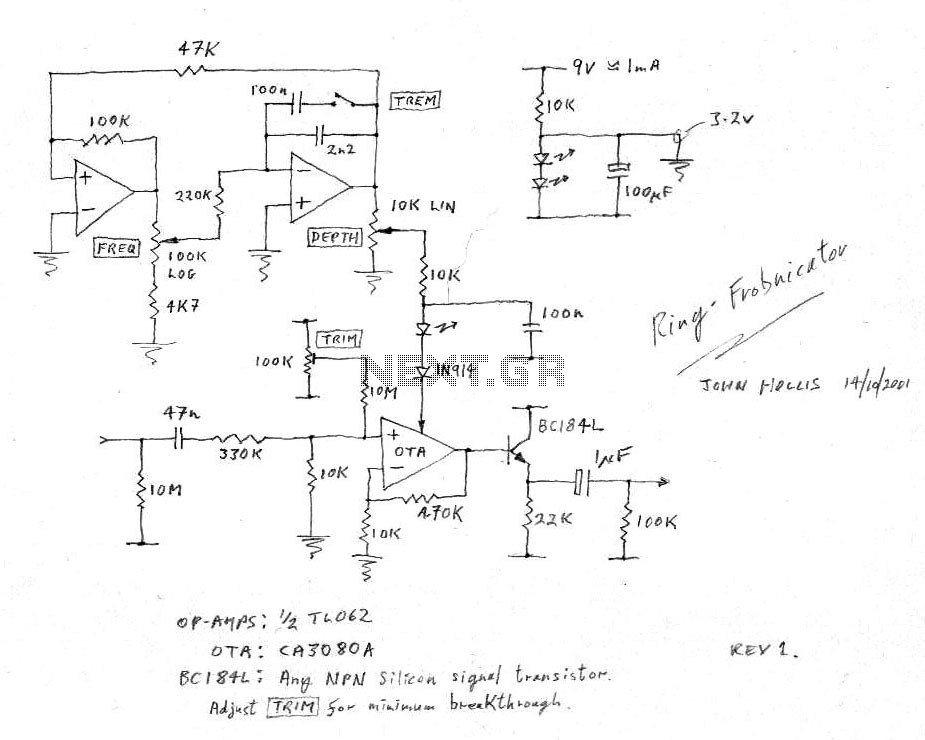
The circuit of the unit is relatively straightforward; however, setting it up can be somewhat challenging. The difficulty arises from the need for matched FETs, which are not easily obtainable. Therefore, it was essential to ensure that the circuit would function effectively with readily available FETs. The phase shifter employs a standard operational amplifier circuit, which has been utilized in similar applications multiple times. After testing various alternative variable resistors, it was concluded that FETs remained the optimal choice, despite their sensitivity during setup and potential linearity issues.
The circuit in question is designed to function as a phase shifter, which is a critical component in various electronic applications, including signal processing and communication systems. The operational amplifier (op-amp) configuration used in this circuit typically consists of resistors and capacitors that determine the phase shift characteristics. When implementing this circuit, it is essential to select components that minimize noise and distortion to maintain signal integrity.
The use of Field-Effect Transistors (FETs) in this design is significant due to their high input impedance and low output impedance, which are advantageous for maintaining signal fidelity. However, the matching of FETs is crucial because mismatched devices can lead to phase errors and degrade performance. When utilizing off-the-shelf FETs, careful consideration must be given to their specifications to ensure compatibility with the circuit's requirements.
In terms of the setup process, it may involve adjusting the biasing conditions and feedback components to achieve the desired phase shift. This may require iterative testing and measurement to fine-tune the circuit. The critical parameters to monitor include the gain, phase shift, and linearity of the output signal. It is advisable to use precision variable resistors to allow for fine adjustments during the calibration phase.
Overall, while the circuit's design is straightforward, the challenges associated with component selection and setup necessitate a thorough understanding of the operational principles and characteristics of the devices involved. Proper execution of this circuit can lead to effective phase shifting capabilities, suitable for a variety of electronic applications.The circuit of the unit is fairly simple, but is a bit irksome to set up. The reason is that obtaining matched FETs is not easy, so I had to make sure that the circuit would work with off-the-shelf FETs. The phase shifter is a standard opamp circuit, and has been used for this sort of application many times.
After experimenting with alternative va riable resistors, I decided that the FET was still the best choice, although they are fairly critical to set up, and have linearity problems. 🔗 External reference
The circuit in question is designed to function as a phase shifter, which is a critical component in various electronic applications, including signal processing and communication systems. The operational amplifier (op-amp) configuration used in this circuit typically consists of resistors and capacitors that determine the phase shift characteristics. When implementing this circuit, it is essential to select components that minimize noise and distortion to maintain signal integrity.
The use of Field-Effect Transistors (FETs) in this design is significant due to their high input impedance and low output impedance, which are advantageous for maintaining signal fidelity. However, the matching of FETs is crucial because mismatched devices can lead to phase errors and degrade performance. When utilizing off-the-shelf FETs, careful consideration must be given to their specifications to ensure compatibility with the circuit's requirements.
In terms of the setup process, it may involve adjusting the biasing conditions and feedback components to achieve the desired phase shift. This may require iterative testing and measurement to fine-tune the circuit. The critical parameters to monitor include the gain, phase shift, and linearity of the output signal. It is advisable to use precision variable resistors to allow for fine adjustments during the calibration phase.
Overall, while the circuit's design is straightforward, the challenges associated with component selection and setup necessitate a thorough understanding of the operational principles and characteristics of the devices involved. Proper execution of this circuit can lead to effective phase shifting capabilities, suitable for a variety of electronic applications.The circuit of the unit is fairly simple, but is a bit irksome to set up. The reason is that obtaining matched FETs is not easy, so I had to make sure that the circuit would work with off-the-shelf FETs. The phase shifter is a standard opamp circuit, and has been used for this sort of application many times.
After experimenting with alternative va riable resistors, I decided that the FET was still the best choice, although they are fairly critical to set up, and have linearity problems. 🔗 External reference
